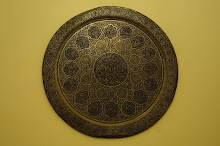
In the autumn of 1975, Syria dispatched a regiment of army special-forces soldiers to Lebanon. The deployment was in response to a request for assistance from the Lebanese government which was then facing a civil insurrection. Rather than stabilizing the situation and then leaving, the Syrians remained in situ, becoming entangled in the dizzying tribal frenzy that became Lebanon’s 15-year civil war.
Fearing a state of anarchy on its western border, and seeing an opportunity to seize upon a lengthy historical claim to Lebanon, Damascus dug-in its heels for the duration of the civil-war and beyond - eventually becoming overlord to this tiny and once sovereign country in the Eastern Mediterranean.
Some 40,000 Syrian troops and countless intelligence personnel eventually made Lebanon their home. In the process, Lebanon’s society and landscape were transformed through the creation of an infrastructure designed to funnel information and booty to the political godfathers in Damascus.

All across Lebanon, and around the environs of Beirut, this vast informer network of soldiers and spies took up ad-hoc lodgings often in villas or homes which they had confiscated from their owners as far back as the beginning of the civil-war. Many of these garrisons, set on strategic points that punctuated the capital and its hillside suburbs, acted not only as shelter for Syrian soldiers, but as stopover points for the movement of drugs, weapons, money, and political prisoners.
For the Lebanese, these impromptu lodgings were considered no-go areas where the disheveled and heavily moustachio’d underlings of the omniscient Big Brother of the Arab hinterland resided.

The Alay region of Lebanon is the sight of several such former army garrisons. The hilltop outposts in-and-around the towns of Damour, Aramoun, Choueifat, Doha and Khaldeh, which overlook the southern approaches to the Lebanese capital, were originally established as a defense against an invasion by Israel.
In the fall of 2004, after almost 30 years, the Syrian army began to partially vacate these areas as Damascus started scaling back its military presence from Beirut. The remaining outposts were entirely emptied in April 2005 during the retreat of the Syrian army from Lebanon in the wake of the assassination of former Lebanese Prime Minister Rafiq Harriri. It was a hit for which the Syrians are now largely blamed. These army villas are now left abandoned, awaiting reclamation by their original owners. It is here that the physical legacy of the Syrian presence in Lebanon is still most visible.

I traveled to the town of Aramoun to visit the former Syrian army lodgings, many of which remain until today uninhabited. Four or five of the buildings can be seen sticking out like sore thumbs along the main road that loops through the hilly, verdant community of quaint homes and low-rise apartment blocks. Each is an enormous ruin stripped bare, replete with missing panes of glass, collapsed walls and bullet holes. Forests of protective weeds can usually be found adorning the perimeter of these properties.
Braving the incredulous stares of the locals, I managed to find my way inside a few of these buildings. Their dilapidated exteriors and associations with an occupying army made them very much taboo. It was impossible not to be seen entering these buildings during daylight, so I kept a swift pace.


From the inside, the buildings were almost entirely gutted, though the residues of lives lived were everywhere to be felt. The imagination spikes amidst these scenes of abandon: empty, dirt-smeared hallways teeming with ghosts; car tires set in a semi-circle to create a makeshift living room; beams of sunlight given form in the dust-laden air. Odd objects left behind, too worthless or too burdensome to be carried away, littered the floors: an army jacket, a padlocked wooden crate, a termite-eaten desk, charred cushions used for indoor campfires, a sofa shredded to pieces…


A colorful legacy of political wall art - including graffiti, political poetry, and collages of magazine cut-outs - still adorn the villas mixing with the rubbish and pock-marked concrete to create a sort of Arabic post-apocalyptic mood. Catalogues of names of Syrian soldiers can be found scribbled upon every wall, reflecting anguished moments of solitude. Political slogans and quotes from deified Damascene rulers - drilled into the warrior consciousness - greet the wanderer at every doorway. In one hallway: “The human being attains his humanity as he walks towards martyrdom.” Completing the entire picture was a silence and smell of decay that mimicked death in its finality and coldness.

How would the former occupants of these buildings, if they were still to be found today, begin the process of reclaiming and reabsorbing these places? How would they reacquaint with their old living spaces that have been transformed – irrevocably - beyond both physical and psychic recognition? Who exactly lived here, and what went on in these homes for the better part of three decades will surely never be known.
Text and photos in this post copyright John Zada and John Bell 2008














No comments:
Post a Comment